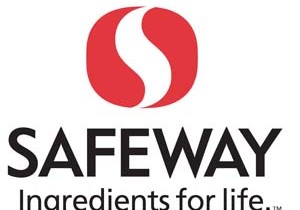Safeway Exec Urges Industry Cooperation To Eliminate Forced Labor in Supply Chains
By Dinah Wisenberg Brin
Safeway, which has undertaken a far-reaching effort to purge forced labor and human trafficking from its supply chains, is looking for global industry coordination in fighting the problem. This is yet another example of a major retailer that is answering the call for supply chain transparency.
Safeway’s supply chain chief, Carl Graziani, spoke earlier this month at the Trust Women Conference in London, where he encouraged the food industry to share information, conduct audits and use technology to map and monitor supply chains for forced labor.
“No company should gain a competitive advantage in the marketplace by exploiting other human beings. It’s really that simple for us,” the grocer’s senior VP for supply chain sourcing and strategies said during a panel discussion at the women’s rights gathering, which was posted on the conference website. Thomson Reuters Foundation and the International New York Times organized the event.
Safeway has been rewarding suppliers that meet its anti-slavery standards, sending more business their way, and working on remediation plans with those in non-compliance, Graziani said.
While forced labor has been a concern for Safeway for several years, its activism on the problem is more recent.
As long ago as 2007, Safeway’s vendor handbook precluded manufacturers of the products it sells from using forced labor, Graziani noted. The California-based company has become more active in addressing supply-chain slavery since roughly January 2012, when the state’s Transparency in Supply Chains Act started requiring that retailers and manufacturers with at least $100 million in sales publicly disclose what they’re doing to end human-rights abuses in their supply chains.
Having to write the disclosure caused the company assess what it was doing, and Safeway started asking manufacturers where they were buying their products.
“It became evident that, you know, one or two steps down the supply chain, that begins to get a little fuzzy,” Graziani said. Safeway started working with the anti-human-trafficking group Not For Sale and doing due diligence. “How much could I confirm and how much could I verify that my supply chain was free from human trafficking and slavery?”
An estimated 25 million to 30 million people worldwide are working in forced labor, he noted. “It just resonated with us that this is just a huge issue globally,” Graziani said, adding that corporate social responsibility is “embedded in our DNA.”
Getting a handle on the problem is a major challenge for a company like Safeway, which has, Graziani said, 165,000 unique items from more than 5,000 manufacturers in its more than 1,300 stores. At least one of those manufacturers has 1,000 suppliers itself.
“I think the word supply chain needs to be taken out of the dictionary. This metaphor of a single strand of interconnected links that leads from raw material down to finished good is obsolete. None of us in today’s complex global economy manage a supply chain. We manage a supply web,” Graziani said. “I have a million links in my supply node.”
Getting a handle on abuses in supply networks isn’t a one-time task, either, he said, explaining that the supply web is very dynamic. Safeway, for example, typically sources its flowers from 20 to 30 South American farms, but that figure grows to 60 to 100 for Valentine’s Day and Mother’s Day.
Safeway has met with the U.S. Department of Labor, which has a helpful e-tool that allows users to see high-risk products and countries, Graziani said. Relying on that tool, though, means that all chocolate from the Ivory Coast suddenly becomes a risk, he said.
Graziani said he sees no clear path to certification, but believes the industry can cooperate and coordinate efforts with rights organizations and governments to flag human-rights abuses in supply chains. He noted that the industry developed standards for bar codes, adding, “Why can’t we do this for supply chains? We need to map and monitor them. We have to leverage technology to do this,” processing alerts through the supply networks.
As for Safeway, the first step for dealing with suppliers that fall short of standards is to “meet with them top to top” and put a remediation plan in place; complying suppliers are being rewarded with business, Graziani said.
Safeway states in its public disclosure that its stringent supplier code of conduct requires suppliers to allow factory inspection for compliance with contracts and with laws and regulations related to child and forced labor and unsafe working conditions, the disclosure notes.
The company has asked its suppliers to certify that the materials used in the products they supply Safeway comply with slavery and human trafficking laws, and to ensure that their subcontractors meet the same standards. Safeway now requires its suppliers to complete a survey about their standards and activities to address these matters.
One of the company’s large suppliers is just getting started on the process, Graziani told the London audience, “so we have a lot of work to go. For us it became obvious that this was not really a sprint. This is definitely a marathon.”





